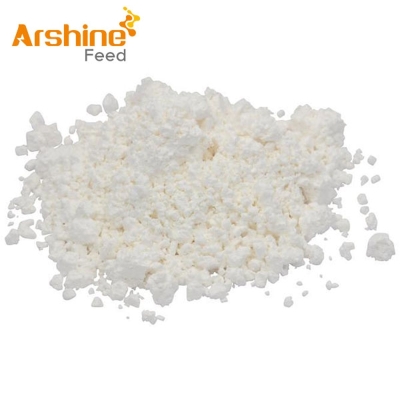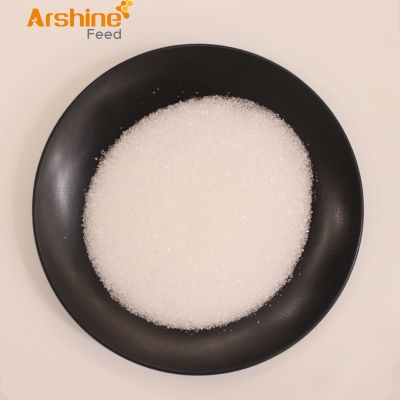Analysis of the increase in food prices in the previous period
-
Last Update: 2008-11-03
-
Source: Internet
-
Author: User
Search more information of high quality chemicals, good prices and reliable suppliers, visit
www.echemi.com
Introduction: since the wheat harvest in the second half of last year, China's grain market has been in a six-year downturn since 1998, and grain prices have risen in an all-round way The increase in grain prices was first reflected in the grain production areas and soon spread to the grain sales areas, which led to an overall increase in market prices of major grain varieties, including corn, wheat, rice and so on, nationwide By the end of March this year, the prices of the three major grain varieties had increased by 40% - 50% compared with the same period last year, gradually approaching the high price range of 1995 and 1996 Grain prices have been rising continuously in a short period of time, which is highly valued by the Party Central Committee and the State Council Since the second half of last year, the central government has made resolute decisions, taken a series of powerful policy measures in a timely manner and responded positively, which has achieved good results Changes in market grain prices since the second half of last year (1) from June last year to March this year, the prices of the three major grain varieties increased by 40% - 50% Generally speaking, the grain price rise can be roughly divided into two stages: wheat and rice leading the rise alternately In June last year, the market price of wheat began to rise slightly after harvest In the fourth quarter, the price of corn began to rise under the pressure of export and supply The rice supply in some areas was insufficient and the price began to rise By October, the market prices of the three major grain varieties had generally risen by about 20% Since October, rice prices have risen rapidly, followed by wheat prices, and corn prices have not fallen even in the harvest season, pushing the market grain prices up for the second time By March this year, the market price of grain had increased by 20% - 30% compared with that of last October In April, with the appearance of the effect of various macro-control measures, the overall market price tends to be stable In terms of varieties, wheat prices have been rising since June last year By the end of October, the market price of wheat in the main production areas has risen by more than 20% Taking the wholesale market as an example, in late October, the price of wheat in Zhengzhou wholesale market was about 1225 yuan / ton, 14% higher than that at the beginning of the year, while that in South China wholesale market was 1450 yuan / ton, 14% higher than that at the beginning of the year Wheat prices rose again in December, and this trend continued until March this year The prices of the two wholesale markets reached 1500 yuan / ton and 1700 yuan / ton respectively, up 22% and 17% respectively from October last year, up 40% and 33% year on year The increase of rice market price is relatively large In Hunan grain wholesale market, the price of indica rice was 1510 yuan / ton in the middle and late September of last year, which rapidly rose to 1920 yuan / ton in October, up 27%; in Jiangxi, the wholesale price was 1620 yuan / ton in September, 1880 yuan / ton in October, up 16% Before and after the Spring Festival, the market price of rice rose sharply again By March this year, the prices of the two wholesale markets had risen to 2300 yuan / ton and 2560 yuan / ton respectively, 20% and 36% higher than that in October, and 60% and 65% higher than that in the same period last year In this price increase, the price increase of early indica rice is faster than that of middle and late indica rice, and that of Japonica rice is larger than that of indica rice The increase of corn market price is less than that of rice and wheat, mainly due to the large increase after October last year In South China grain wholesale market, the wholesale price of corn in September was 1180 yuan / ton, rising 23% to 1450 yuan / ton in late October; in Jilin grain wholesale market, the wholesale price was 970 yuan / ton in September, 1050 yuan / ton in October, up 8% In March this year, the wholesale price was over 1130 yuan / ton, up 8% from October, up nearly 20% compared with the same period last year (2) the rise in food prices was affected by macroeconomic situation, changes in market supply and demand, market expectations, policy factors and other factors 1 The macro-economy is growing rapidly, and the demand driven by production and consumption is the external cause of the increase of grain price Since last year, due to investment and positive monetary policy, China's economy has gradually stepped out of the shadow of deflation, showing rapid growth in recent years In 2003, under the influence of the SARS epidemic, GDP still maintained a 9.1% growth At the same time of the good trend of GDP, the demand for upstream products such as energy, raw materials and grain is growing too fast, which leads to the rising of the overall price level In 2003, the total level of consumer prices rose by 1.2% year on year In the first quarter of this year, the total level of consumer prices rose by 2.8% year on year 2 The decrease of grain production and the decrease of stock are the internal causes of the increase of grain price The change of grain price is a direct reflection of the change of supply and demand, but it is ahead of the change of supply and demand Price rise does not wait for the reversal of supply and demand, but will show up when there are signs of tightening supply and demand Since 2000, due to the adjustment of planting structure, the decrease of cultivated land occupied, the decrease of per unit yield, especially the decrease of farmers' enthusiasm for grain planting and other factors, the grain production has declined significantly for many years in a row In 2003, China's grain output was 430.65 billion kg, the lowest level since 1990 At the same time, China's grain inventory fell rapidly By March this year, the total inventory was nearly 50 billion kg lower than that of the same period last year Although the total supply is still larger than the demand, the contradiction of variety and structure has been fully revealed 3 Poor circulation is an important reason for the rise of grain price In the past few years, due to the oversupply of grain and the open purchase of surplus grain by farmers in the main grain producing areas and the opening of the purchase market in the main grain selling areas, the regional distribution of grain inventory in China is unbalanced Most of the commercial inventory is only concentrated in some large grain producing provinces In addition, at present, the different purchase and financial subsidy policies are implemented in the production and marketing areas, which makes the distribution of grain inventory further concentrated in the production areas Since last year, the rapid growth of investment has led to excessive demand for upstream products such as energy, raw materials and grain, which has resulted in a shortage of national transportation capacity, making it very difficult to transfer grain from production areas to sales areas The poor circulation causes the imbalance of demand, thus stimulating the rise of grain prices At the same time, due to factors such as the sharp rise of international freight and domestic restrictions on road overload, domestic freight keeps rising, increasing the cost of grain procurement to a certain extent For example, in October last year, the freight from Changchun to Dalian increased by 30 yuan / ton, and the freight from Dalian to Guangzhou by boat increased by 30 yuan / ton 4 The psychological expectation of the price rise affects the behavior of selling and purchasing grain of farmers and enterprises First, the expected market price of agricultural products will continue to rise, hoping to sell at a better price and increasing the psychology of reluctant to sell After the autumn harvest last year, most of the grain farmers in the main corn producing areas, except those who are eager to use money, hold the grain for sale Second, some state-owned grain purchase and sale enterprises in the main grain production areas "sell down but not sell up", hoping to make up for the losses of the previous years through higher prices The sales are not active, which to a certain extent reduces the supply of the market Third, some grain processing enterprises, such as rice, flour and feed, had no inventory before In the case of tight supply in the market, they were worried about the further increase of the market price of grain and increased the purchase cost, so as to rush to buy and increase the market demand Especially in some areas, the phenomenon of "holding grain" in grain storage enterprises and "grabbing grain" in grain consumption enterprises has appeared, which has a magnifying effect on the market price fluctuation 5 Policy factors have a certain impact on the rise of food prices At the end of November last year, the relevant state departments required the main sales areas to further enrich the scale of local reserves in accordance with the requirements of "six-month sales volume", and to meet the requirements of the state before the summer harvest this year On the one hand, the centralized purchase behavior in the main sales area increases the demand for the market, on the other hand, it reduces the effective supply of the market, and makes the main production area make the operation choice of "seller's market", which causes the price of grain to rise At the same time, when grain was listed in autumn last year, the improvement of the level of grain purchase protection price in Northeast China reflected the government's judgment on the rising trend of market grain price, which objectively played a certain supporting role in the rise of market grain price 6 Other factors It mainly includes the increase of grain price in the international market caused by the decrease of global grain output and inventory, the reversal of market in the international and domestic futures markets, the new round of bull trend, and the continuous increase of soybean price caused by the expansion of domestic soybean production and demand gap (3) some basic judgments on this rise in food prices The author believes that: 1 The characteristics of this increase in grain prices are that the prices of major grain varieties have increased dramatically in a short period of time It is mainly caused by the decrease of grain inventory and total supply caused by the successive reduction of grain production and the continuous increase of annual consumption over the same year This kind of price increase is a recovery increase after several years of price decline, which has not exceeded the highest price range of major grain varieties a few years ago From the point of view of the negative growth of China's grain price for six consecutive years, this rise in grain price shows an obvious desire and performance of price return, that is, a restorative growth However, in a short period of time, the speed and range of price rise are too fast, which should be highly concerned 2 This increase in grain prices is mainly due to the role of market mechanism There are many factors that cause the rise of grain price, but in fact, they are the result of the law of supply and demand and the law of value in grain market, and the market factors dominate the rise of grain price The rise of grain prices has proved at least four problems, one is that the relationship between supply and demand is changing; the other is that structural contradictions are increasingly prominent; the third is that market information is asymmetric; and the fourth is that the operation mechanism of market subjects is constrained This rise in food prices will play both positive and negative roles In addition to the negative effects, the increase of grain price is conducive to the increase of farmers' income, and the decrease of farmers' income can be alleviated and improved At the same time, a proper increase in food prices will, to a certain extent, stimulate the majority of food and agriculture to consciously expand food production 3 The rise in food prices reminds governments at all levels to attach great importance to food security The provinces with insufficient grain inventory initially feel that the unstable grain price may have a direct impact on economic development and social stability from this increase in grain price; feel the inadequacy of the local government's ability to control grain price, and feel that if they do not pay attention to grain security now, they will have problems sooner or later, and from the perspective of China's national conditions and grain situation, they will not be small problems
This article is an English version of an article which is originally in the Chinese language on echemi.com and is provided for information purposes only.
This website makes no representation or warranty of any kind, either expressed or implied, as to the accuracy, completeness ownership or reliability of
the article or any translations thereof. If you have any concerns or complaints relating to the article, please send an email, providing a detailed
description of the concern or complaint, to
service@echemi.com. A staff member will contact you within 5 working days. Once verified, infringing content
will be removed immediately.







